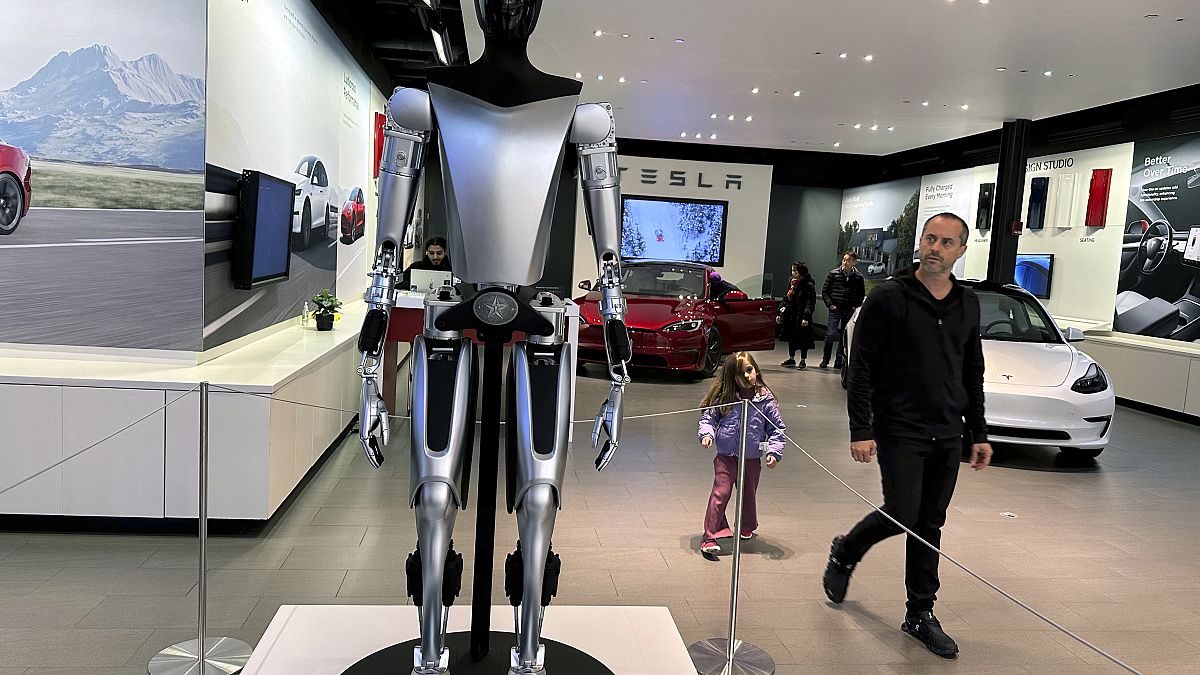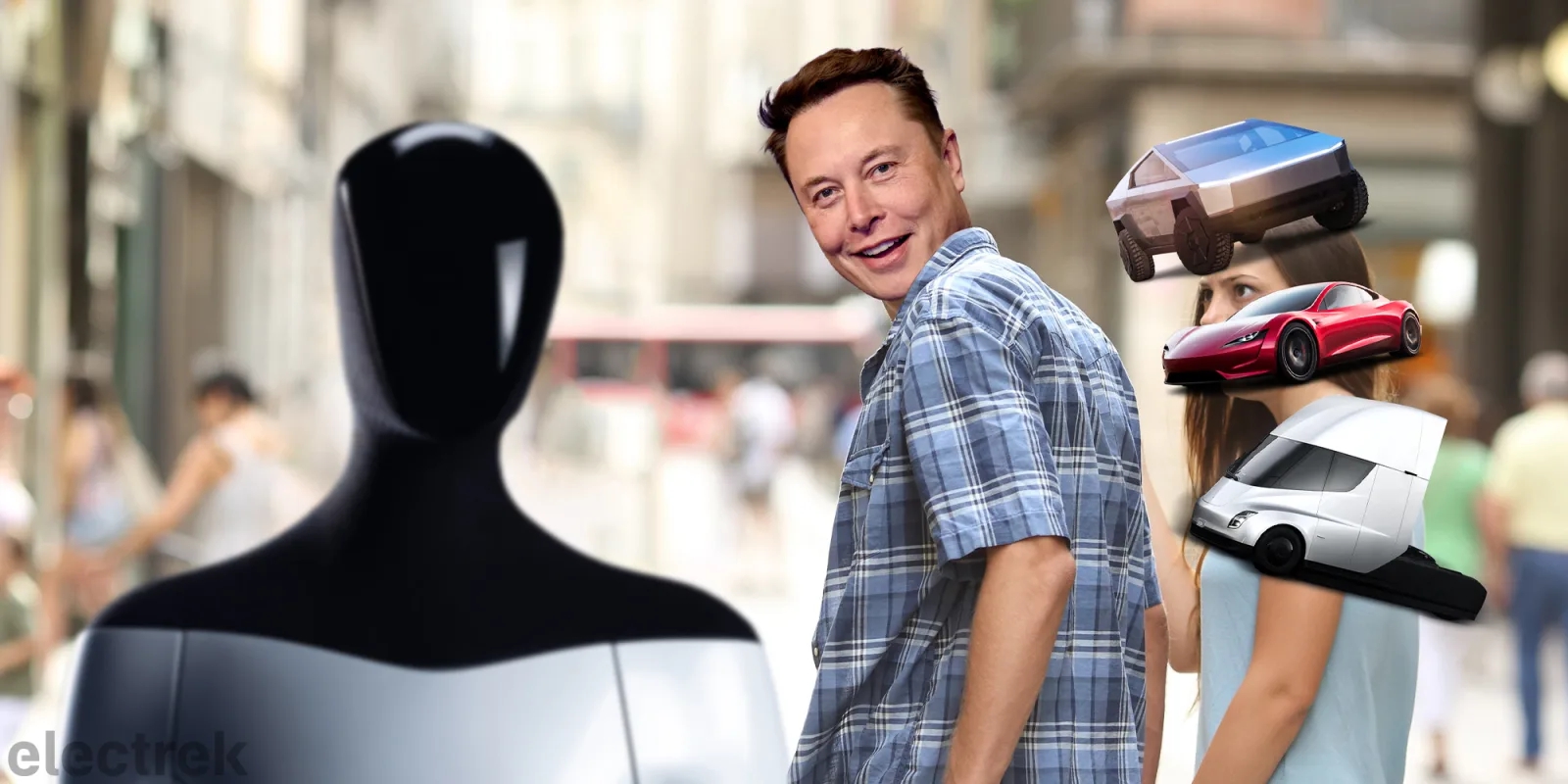
Elon Musk is no stranger to sweeping visions of the future. From colonizing Mars with SpaceX to accelerating the global transition to electric vehicles through Tesla, Musk’s ambitions have continually pushed the boundaries of technology and imagination.
Recently, Musk announced that the future of Tesla lies in robotics, signaling a major strategic shift for the company. This new direction aims to leverage Tesla’s advances in artificial intelligence, battery technology, and manufacturing to develop humanoid robots that can perform a wide range of tasks — potentially transforming industries, labor markets, and everyday life.
However, Musk was candid about the challenges ahead, acknowledging that the road to widespread adoption of Tesla’s robots will be long and demanding. This combination of visionary optimism and realistic caution frames a complex narrative about the role of robotics in Tesla’s future and the broader technological landscape.
Tesla’s story so far has largely been about revolutionizing transportation and energy storage. The company’s electric vehicles have disrupted an entire industry, prompting legacy automakers to pivot rapidly towards electrification.

Tesla’s innovations in battery design, powertrain efficiency, and vehicle software have set new standards for range, performance, and driver assistance technologies. Beyond cars, Tesla’s energy products — solar roofs, Powerwalls, and grid-scale battery installations — have extended the company’s reach into sustainable energy generation and storage.
This integrated ecosystem reflects Musk’s mission to accelerate the world’s transition to sustainable energy. Robotics, however, represents a new frontier, one that moves Tesla beyond vehicles and stationary energy solutions into a realm with potentially broader societal impact.
Central to Musk’s robotics ambitions is the Tesla Bot, also known as Optimus. Unveiled in prototype form, Optimus is designed as a general-purpose humanoid robot capable of performing repetitive, dangerous, or menial tasks that are difficult or undesirable for humans.
Musk has described a vision where millions of such robots could one day assist in manufacturing, logistics, agriculture, caregiving, and even household chores. The Tesla Bot would harness the company’s expertise in AI, computer vision, sensor fusion, and electric motors, combining these technologies to create robots that can perceive and interact with complex environments autonomously.

Despite the allure of this vision, Musk has been careful to temper expectations. Developing humanoid robots that can safely and reliably operate in the chaotic and unpredictable real world remains a monumental challenge. While Tesla’s work in autonomous driving provides a foundation for AI perception and decision-making, translating these capabilities to bipedal robots introduces an additional layer of complexity.
Balance, dexterity, tactile feedback, and safe interaction with humans require innovations across hardware, software, and system integration. Musk’s statement that “it will take time” to realize Tesla’s robotics goals is a recognition of the enormous engineering and scientific hurdles involved.
The timeline for Optimus and Tesla’s broader robotics efforts has been fluid and subject to revision. Initial prototypes demonstrated at Tesla’s events have shown basic walking and object manipulation, but the path to commercial viability remains long. Industry experts emphasize that achieving reliable, general-purpose humanoid robots is one of the most difficult technological challenges today.
Early deployments may be limited to controlled environments such as Tesla’s factories or specific industrial applications before expanding to broader markets. This phased approach acknowledges both technical limitations and regulatory hurdles associated with introducing autonomous robots into human spaces.
Tesla’s venture into robotics also reflects a growing trend in the tech industry towards automation and AI-driven labor augmentation. As robotics and artificial intelligence mature, they promise to disrupt traditional labor markets and economic structures.

Musk’s vision situates Tesla at the forefront of what some call the “fourth industrial revolution,” where intelligent machines assist or replace humans in many tasks. This transformation raises profound societal questions about employment, income distribution, worker retraining, and the ethical use of robots.
Musk’s leadership in this domain not only affects Tesla’s business strategy but also has potential ramifications for social policy and labor relations worldwide. Critics of Tesla’s robotics ambitions caution against over-optimism. The history of robotics is filled with failed promises and delayed breakthroughs.
Many companies have struggled to build robots with the agility, intelligence, and safety required for everyday human environments. Concerns also arise about Musk’s tendency to set ambitious timelines that are later pushed back, leading to skepticism about when Tesla’s robots might truly impact the market.
Moreover, the high cost of developing and manufacturing sophisticated humanoid robots could limit early adoption to specialized industrial sectors rather than mass consumer markets.

Musk’s role as CEO of multiple groundbreaking ventures simultaneously — including Tesla, SpaceX, Neuralink, and The Boring Company — adds another layer of complexity to Tesla’s robotics program. Dividing his attention among diverse projects creates challenges in resource allocation, management focus, and strategic continuity.
Nonetheless, Tesla’s financial strength, talent acquisition, and Musk’s reputation for visionary leadership position the company well to pursue robotics aggressively despite these challenges.
The introduction of robotics at Tesla aligns with Musk’s broader philosophy of integrating artificial intelligence across industries. Tesla’s Full Self-Driving (FSD) software represents one of the company’s flagship AI products, aiming to enable fully autonomous vehicles.
The underlying AI architectures and sensor technologies developed for FSD provide a valuable technological base for robotics. Improvements in machine learning models, perception systems, and control algorithms can potentially be adapted and enhanced to power humanoid robots, creating synergies between Tesla’s autonomous vehicles and robotics divisions.
Public and investor reactions to Musk’s robotics statements are mixed. On one hand, the promise of humanoid robots opens exciting new horizons for Tesla’s growth and innovation. On the other hand, uncertainty about timelines, feasibility, and costs leads to cautious optimism.
Analysts emphasize the importance of setting realistic milestones and demonstrating tangible progress to maintain confidence. The robotics venture also adds to Tesla’s already complex portfolio of technologies, increasing operational and financial risks.
Looking ahead, Tesla’s progress in robotics will be closely watched as a key indicator of the company’s ability to innovate beyond electric vehicles and energy solutions. Demonstrations of functional robots capable of performing meaningful tasks will likely drive market enthusiasm and shape public perception. Success could position Tesla as a pioneer in one of the most transformative technologies of the century, fundamentally altering how humans work and live.
Moreover, Tesla’s robotics efforts may stimulate wider industrial innovation. As the company shares research findings, patents, and collaborates with other players, the robotics ecosystem could accelerate globally.
This dynamic might spur competition, partnerships, and regulatory frameworks that shape the ethical deployment of robots in society. Tesla’s role in defining standards and norms for humanoid robotics will be critical in ensuring these technologies develop safely and beneficially.

In conclusion, Elon Musk’s declaration that Tesla’s future lies in robotics encapsulates an audacious vision that promises to redefine technology, business, and society. The journey to that future is undeniably complex and will require years of dedicated effort, innovation, and adaptation.
Musk’s transparent acknowledgment of the time needed underscores a pragmatic understanding amid his characteristic boldness. As Tesla advances toward a robotics-powered era, the world waits with anticipation to see if Musk’s vision will materialize into a revolutionary reality or remain an ambitious aspiration.
Regardless, the pursuit itself highlights the evolving interplay between artificial intelligence, robotics, and human progress at a pivotal moment in technological history.
-1743921687-q80.webp)
-1748248073-q80.webp)
-1742973489-q80.webp)
-1747987201-q80.webp)